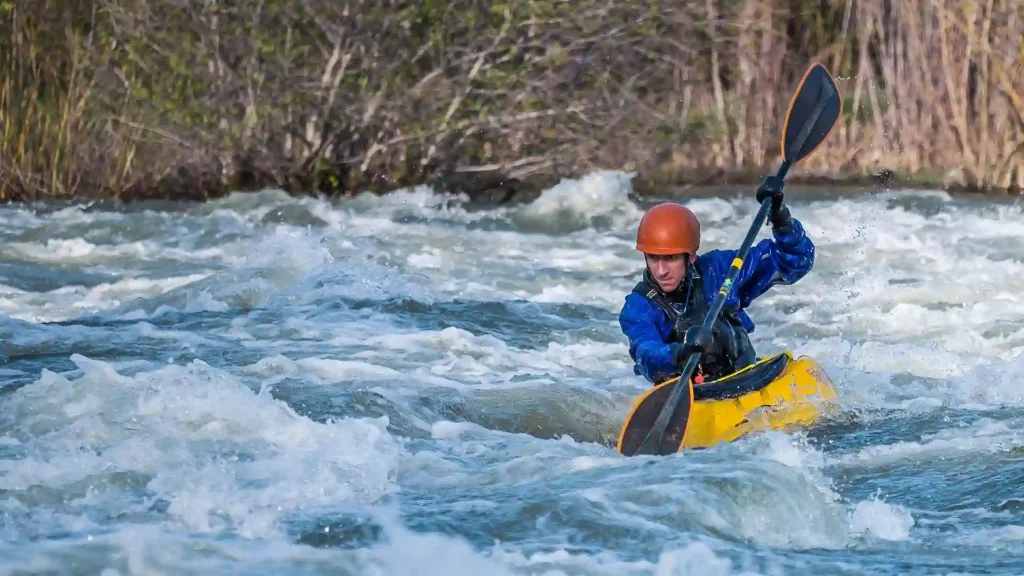Kayaking provides an exciting way to explore rivers, lakes, and the open sea. Without a right type of kayak, you will not enjoy your ride. But selecting the right kayak can make a significant difference in your overall experience. With numerous kayak types available, it can be overwhelming to know where to begin. This article will guide you through the different types of kayaks and how to choose the one that best fits your needs.
Types of Kayaks
Recreational Kayaks
Recreational kayaks are typically wider and more stable, making them ideal for beginners. They offer comfortable seating, ample storage space, and easy to maneuver. These kayaks are shorter than 14 feet, generally 8-12 feet, and have wide stable bodies and open cockpits for comfortable seating and entry –exits.
The short length of the kayak makes the operation smooth and it is easier to shift direction. They are fairly lightweight and have a storage for equipment. Recreational kayaks are ideal for short tours like one or two hours of paddling.
Recreational kayaks are suitable for beginners, anglers and paddlers of all ages and skills. They are designed for recreational activities on an open lake, calm water or slow-moving rivers.
John Knight, a kayaking expert and instructor at Paddle Planet says, “For those just starting out or who want a kayak for leisurely paddling on calm waters, recreational kayaks are the best option,”
Touring Kayaks
Touring kayaks are suitable for more experienced kayakers, initially invented by the Inuit of Greenland for hunting whales and fish in rough water. They are also known as sea kayaks or expedition kayaks and designed for longer trips on open water, including lakes, oceans, and rivers.
These kayaks are typically longer, narrower with rounded bottoms, and have more storage space to accommodate gear for extended trips. The length of touring kayaks are generally 12 to 20 feet and width is 18-24 inches.
This design helps to navigate in turbulent and strong currents. Touring kayaks can move faster through water, so you can move with greater speed than the recreational kayaks. Their speed, efficiency, strength, balancing and ability to move upstream make your kayaking journey more exciting.
Touring kayaks have cockpits with an enclosed deck. This deck can be sealed further with a sprayskirt by wrapping around the cockpit to make it waterproof. This allows an experienced kayaker to handle rough water.
“Touring kayaks are built for efficiency and speed. They’re perfect for longer journeys, but beginners might find them more challenging due to their narrower design,” says Emily Lawson, a seasoned touring kayaker.
Whitewater Kayaks
Whitewater kayaks are shorter, with a specialized hull design that allows for maximum maneuverability in turbulent water. They are designed to handle quick turns and provide excellent control in challenging conditions.
Whitewater kayaks are built for tackling rough, fast-moving water, such as rivers with rapid current. This sport attracts a wide range of kayakers who loves adventures down their local rivers and thrill of challenging and consequential whitewater. They aren’t suitable for a pure beginner.
According to Jeff Matthews, a professional whitewater kayaker, “Whitewater kayaks are engineered to handle the unpredictability of rapids. They’re not ideal for beginners but are perfect for those looking for an adrenaline rush.”
Sit-On-Top Kayaks
Unlike traditional kayaks, these kayaks don’t have an enclosed cockpit; the paddler sits on top, the seats are out in the open air. These kayaks are stable, easy to get in and out of, and great for warmer water. Sit-on-top kayaks are easy to paddle and a popular choice for beginners, recreational paddlers, and those who prefer a more relaxed kayaking experience.
The sit-on-top kayaks are more accessible for its easy entry and exit and easier for people with mobility issues. For having no cockpit, it is easier to squeeze out of water when overturn. They have scupper holes to drain water out. Sit-on-top kayaks tend to be wider and stable.
“Sit-on-top kayaks are great for beginners, especially if you plan to paddle in warmer climates or want a kayak for short, casual trips,” says Maria Lopez, a professional kayaking instructor.
Inflatable Kayaks
Inflatable kayaks can be inflated for kayaking and deflated for storage. They are generally make of multi-layers PVC, drop-stich technology. They offer the convenience of portability, making them a great option for those who have limited storage space or want a kayak for travel. Inflatable kayaks are ideal for camping, fishing, and river running, and can be easily transported in a car or on public transportation.
They are often made with durable materials, and modern designs offer surprising performance despite their inflatable nature. These kayaks are typically used for recreational paddling or flatwater touring.
“Inflatable kayaks are a great choice for people who need a kayak that’s easy to store and transport. Just be mindful of their limitations in rougher conditions,” says Kate Harmon, an expert in outdoor gear and kayak tours.
Fishing Kayaks
Fishing kayaks are specifically designed for anglers, with features such as rod holders, extra storage for gear, and even special seating for comfort during long fishing trips. They come in both sit-on-top and sit-in designs, with a focus on stability and functionality for fishing. But the problem is that it can be heavier and less maneuverable than other types of kayaks.
“Fishing kayaks have evolved over the years, and today’s models offer excellent stability and comfort for long days on the water,” explains Brian Carter, a professional kayak fisherman.
How to Choose the Right Kayak
Choosing the right kayak depends on several factors, including your experience level, the type of water you’ll be paddling on, and how you intend to use the kayak. Here are key considerations when selecting a kayak:
Your Paddling Experience
If you’re new to kayaking, you’ll likely want a kayak that offers stability and ease of use. Recreational or sit-on-top kayaks are great for beginners, as they provide comfort and security. More experienced paddlers might prefer a touring or whitewater kayak, which offers speed, maneuverability, and versatility for specific conditions.
Type of Water
Consider the type of water you’ll be paddling on:
Calm, flatwater: Recreational, touring, or sit-on-top kayaks are best.
Rivers with rapids: Whitewater kayaks are designed for these conditions.
Ocean or lakes: Touring kayaks work well for longer trips, while fishing kayaks are tailored for anglers.
Storage and Portability
If you plan to travel with your kayak or have limited storage space, an inflatable kayak might be the best choice. For those with more storage space, a hard-shell kayak will provide better durability and performance.
Kayak Length and Width
Longer kayaks offer more speed and tracking ability, making them ideal for touring and longer trips. Wider kayaks provide greater stability, ideal for beginners or recreational paddlers who want more comfort.
Comfort and Features
Comfort is a key factor, especially if you plan to kayak for long periods. Look for kayaks with adjustable seats and footrests. Also, consider kayaks with additional features like rod holders for fishing, or waterproof compartments for gear.
Budget
Kayaks vary greatly in price, from budget-friendly recreational models to high-end touring or fishing kayaks. It’s important to find a kayak that fits both your needs and your budget. Investing in a more expensive model can provide better performance and durability in the long run.
Conclusion
Choosing the right kayak can seem daunting with so many options available. By considering your skill level, intended use, and the type of water you plan to explore, you can find a kayak that suits your needs. Experts agree that there is no one-size-fits-all approach, and the key is to match the kayak to your personal preferences and paddling goals.
Whether you’re paddling calm lakes, tackling rivers, or fishing on the open sea, the right kayak will ensure you have the best possible experience on the water.




